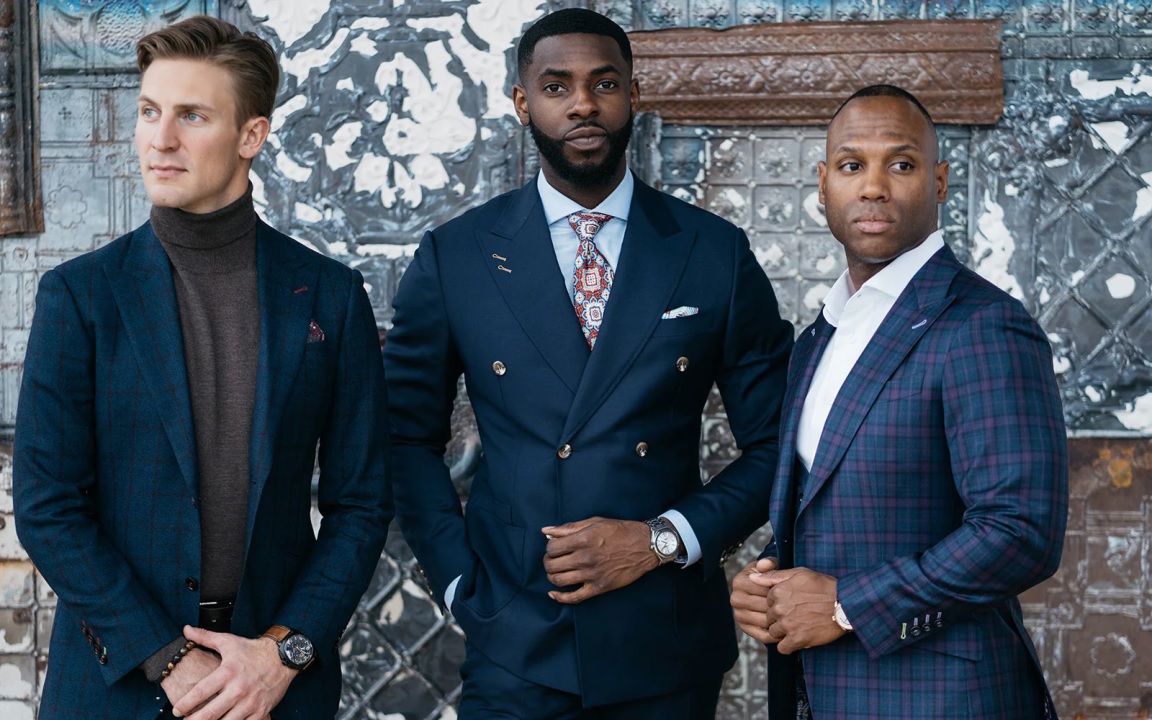Designing your first custom suit marks an exciting milestone in your sartorial journey. The process combines personal style, craftsmanship, and attention to detail, resulting in a garment that fits you perfectly and reflects your unique taste. The steps in this guide the world of bespoke tailoring and create a truly unique suit.
A typical suit consists of a jacket and trousers, with the option to include a waistcoat for a three-piece ensemble. The jacket features elements such as lapels, pockets, buttons, and vents, while the trousers have details like pleats and cuffs styles. Understanding these components informed decisions during the design process.
Choosing the right fabric
The fabric you select for your custom suit plays a significant role in its overall appearance, durability, and comfort. Wool remains a popular choice due to its versatility and ability to regulate temperature. Consider factors such as the suit’s intended use, your local climate, and personal preferences when selecting the fabric. Custom Suits in Fort Worth often feature high-quality, luxurious materials that elevate the garment’s overall appeal.
Determining the suit’s style and silhouette
The style and silhouette of your suit greatly influence its character and how it complements your body type. Choose between single-breasted or double-breasted jackets, and consider the number of buttons you prefer. The suit’s fit – whether slim, classic, or relaxed – should align with your body shape and personal comfort.
Selecting the right color and pattern
The colour and pattern of your suit contribute significantly to its versatility and impact. For your first custom suit, consider timeless options like navy, charcoal, or medium grey, which offer exceptional versatility. If you’re feeling more adventurous, explore subtle patterns like pinstripes, windowpane, or herringbone. The key is to choose a colour and pattern for personal style and the suit’s intended use, whether for business, formal events, or casual occasions.
Focusing on the details
The beauty of a custom suit lies in its intricate details. Pay attention to elements such as lapel style (notch, peak, or shawl), pocket types (flap, patch, or jetted), button styles, and lining options. These details allow you to personalize your suit and make it truly unique. Consider adding subtle personal touches like contrast buttonholes or a custom monogram inside the jacket. Remember that the goal is to create a harmonious design that reflects your personality without appearing overdone.
Measurements and fittings
Accurate measurements are crucial for achieving the perfect fit in your custom suit. Work with an experienced tailor who can take precise measurements and understand your body’s unique characteristics. Be prepared for multiple fittings throughout the process, as adjustments may be necessary to ensure the suit fits you perfectly. During these fittings, communicate openly with your tailor about any concerns or preferences you have regarding the fit or style.
Considering the occasion and versatility
When designing your first custom suit, think about its intended use and how versatile you need it to be. If you’re looking for a suit that can transition from the office to evening events, opt for classic styles and colours. For special occasions, consider more distinctive fabrics or designs. Strike a balance between your style and the suit’s practicality to ensure you’ll get the most wear out of your investment.
Designing your first custom suit is an experience to be savoured. Take your time with each decision, ask questions, and trust the expertise of your tailor. Remember that creating a bespoke garment requires patience, as the process typically takes several weeks from initial consultation to final fitting.





